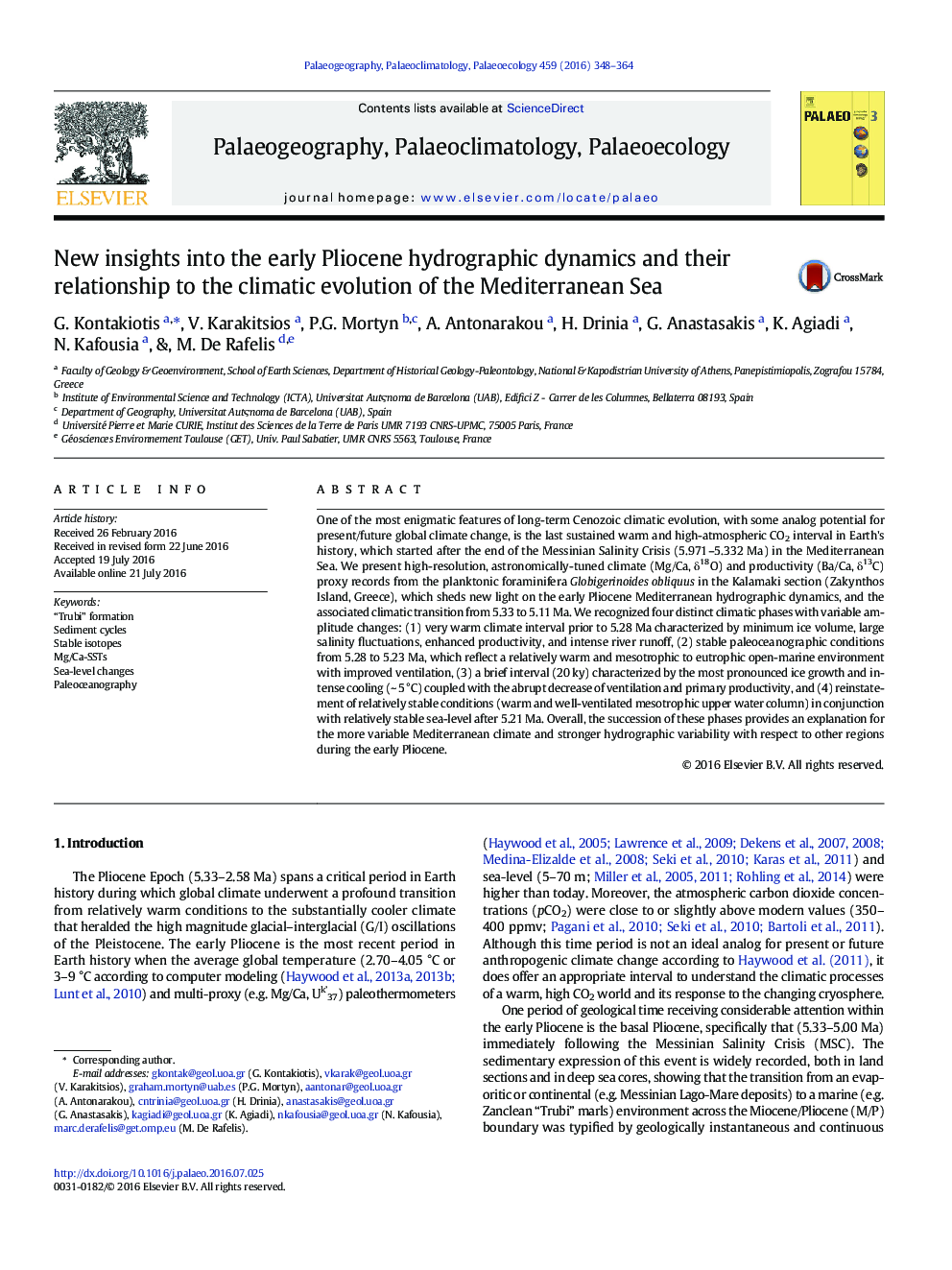| کد مقاله | کد نشریه | سال انتشار | مقاله انگلیسی | نسخه تمام متن |
|---|---|---|---|---|
| 4465641 | 1622132 | 2016 | 17 صفحه PDF | دانلود رایگان |
• Early Pliocene climate variability and hydrographic history is inferred.
• We present a combination of lithostratigraphy with climate-sensitive records.
• We discuss diagenesis and Mg/Casw variability effects on Mg/Ca-paleothermometry.
• We compare western, central and eastern Mediterranean basins in the early Pliocene.
• We outline a warm and variable (4-fold evolution) early Pliocene.
One of the most enigmatic features of long-term Cenozoic climatic evolution, with some analog potential for present/future global climate change, is the last sustained warm and high-atmospheric CO2 interval in Earth's history, which started after the end of the Messinian Salinity Crisis (5.971–5.332 Ma) in the Mediterranean Sea. We present high-resolution, astronomically-tuned climate (Mg/Ca, δ18O) and productivity (Ba/Ca, δ13C) proxy records from the planktonic foraminifera Globigerinoides obliquus in the Kalamaki section (Zakynthos Island, Greece), which sheds new light on the early Pliocene Mediterranean hydrographic dynamics, and the associated climatic transition from 5.33 to 5.11 Ma. We recognized four distinct climatic phases with variable amplitude changes: (1) very warm climate interval prior to 5.28 Ma characterized by minimum ice volume, large salinity fluctuations, enhanced productivity, and intense river runoff, (2) stable paleoceanographic conditions from 5.28 to 5.23 Ma, which reflect a relatively warm and mesotrophic to eutrophic open-marine environment with improved ventilation, (3) a brief interval (20 ky) characterized by the most pronounced ice growth and intense cooling (∼ 5 °C) coupled with the abrupt decrease of ventilation and primary productivity, and (4) reinstatement of relatively stable conditions (warm and well-ventilated mesotrophic upper water column) in conjunction with relatively stable sea-level after 5.21 Ma. Overall, the succession of these phases provides an explanation for the more variable Mediterranean climate and stronger hydrographic variability with respect to other regions during the early Pliocene.
Journal: Palaeogeography, Palaeoclimatology, Palaeoecology - Volume 459, 1 October 2016, Pages 348–364
